What is Marketing Mix?
The 'marketing mix' is a set of controllable, tactical marketing tools that work together to achieve company's objectives
Elements of the marketing mix are often referred to as 'the four Ps':
Product - A tangible object or an intangible service that is mass produced or manufactured on a large scale with a specific volume of units. Intangible products are often service based like the tourism industry & the hotel industry. Typical examples of a mass produced tangible object are the motor car and the disposable razor. A less obvious but ubiquitous mass produced service is a computer operating system.
Price – The price is the amount a customer pays for the product. It is determined by a number of factors including market share, competition, material costs, product identity and the customer's perceived value of the product. The business may increase or decrease the price of product if other stores have the same product.
Place – Place represents the location where a product can be purchased. It is often referred to as the distribution channel. It can include any physical store as well as virtual stores on the Internet.
Promotion – Promotion represents all of the communications that a marketer may use in the marketplace. Promotion has four distinct elements - advertising, public relations, word of mouth and point of sale.
![]()
Product
Product can be goods or service.
Goods are of two types:
- Consumer goods: Goods which are consumed by people such as chocolate, washing machine, television etc.
- Producer goods: Goods which are used by producers or manufactures to produce further goods and services e.g. bottling plant, machinery, trucks etc.
Services are also of two types
- Consumer services: e.g. taxi, car repairing, schools etcProducer
- Services: e.g. factory insurance, advertising agencies.
Features of a successful product
Every successful product has the following features:
![]()
Process of Product Development
A Product goes through a series of steps before it reaches the market.
It all starts with an idea. The idea needs to be further researched to see the feasibility of production. After this a market research might be conducted to find out potential demand. If the marketing department sees a potential market, a prototype is developed which is then tested in a limited market. Feedback is taken and if necessary changes are made to the product to suit it to the market. Once the product is finalised the product is launched onto the main market.

Packaging
Why packaging is done?
To protect the product while transportation or storage. Usually for fragile products packaging is very important. Think about transporting a 52 inch LCD television from Japan to US.
To promote the product, distinguish it among other products through vibrant colours, fonts or material of packaging. On a departmental store self an attractive packing will play a vital role in attracting the attention of the customers.
To inform the customers about the contents, ingredients, weight, size of the product. Many government make is mandatory to print this information on the packing of the products
Product Life Cycle
A Product life cycle shows the different stages through which a product goes from development to decline.
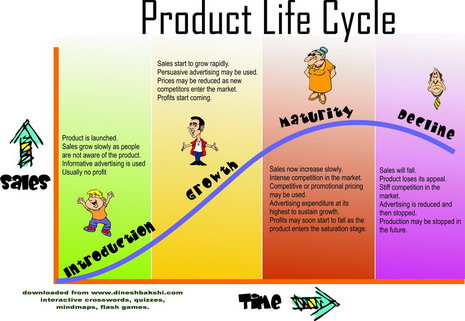
Introduction Stage
Product launched into the market.
Sales grow slowly.
Informative advertising is done.
Firm might not earn a profit at this stage.
Price skimming may be used if the product is new invention and has no competitors. Competitive pricing may be used if it already has lot of competitors.
Growth Stage
Sales grow rapidly.
Persuasive advertising may be used.
Prices may be reduced if faced by stiff competition.
Firm starts earning profits.
Maturity Stage
Sales increase slowly and reach the highest sales figures.
Competition is at the maximum level as many new ‘me too’ products may be in the market.
Promotional pricing might be a good option.
Profits are at the highest level as the firm is also getting economies of scale.
Repetitive advertising is done to remind the consumers.
Saturation Stage
Sales are stagnant.
Maximum competition but no new competitors and the market is already crowded with the same types of products.
Promotional pricing or competitive pricing may be a good choice.
Advertising efforts at its highest point.
Decline Stage
Sales start to decline.
Profits start to come down.
Marketing research it done to find out whether this decline is permanent or temporary. If the decline is permanent in nature then stop the production of the product, otherwise implement extension strategies.
Advertising is reduced.
Extension Stage
Introduce new variations of the original product
Try to sell the product in different markets.
Make small changes in the colour, design or packaging
Start a new advertising campaign.
Add more retail outlets to boost sales.
![]()
Price
Before we go ahead with pricing strategies we should be familiar with Price mechanism.
Price of any product is influence by its demand and supply.
Law of demand: if Price rises demand falls because people will not be able to buy the same quantity of product with the same money they have.
Law of supply: price rises supply rises because more and more suppliers will be willing to sell the product as there is more profit.
Price of the product in the market is determined at the price level where the demand equals the supply.
Price elasticity of demand
This concept is quite important for the marketing managers. PED means the change in demand for a product in response to the change in price.
% change in demand/ % change in price
As a marketing manager you should be aware that how much the demand for your product will change if you increase or decrease the price of your product.
If the PED for your product is less than 1 that means your product is price inelastic and you can raise the price and the demand will be less affected. But if your product is price elastic i.e. more than 1, then a minor price increase might result in a great fall in demand.
![]()
Pricing Strategies
Cost Plus Pricing
It involves estimating how many of the product will be produced, then calculating the total cost of producing this output and finally adding a percentage mark-up for profit.
(Total Cost/Output)* % mark-up=Selling price
Penetration Pricing
Involves setting the price lower than the competitors’ prices. This strategy is usually followed where there is a lot of competition and the product launched may not be unique.
Price Skimming
This is where the product is launched at a premium price. It is common with products which are a new invention and people are willing to pay a premium price because of the novelty factors. It is quite common with Mobile phones and other technological products.
Competitive Pricing
It involves setting the prices in line with the competitors’ price or just below their prices.
Promotional Pricing
It involves reducing the price of product for a limited period of time. Summer sales are an example of Promotional pricing.
![]()
Promotion
In today’s business environment where communicating with the customer is everything, Promotion holds a very important place in the Marketing mix. With so much of competition and ‘me too’ products a successful business is one which can communicate effectively with it customers and convince them to buy its products. Promotion is usually thought as advertsing but Promotion is much more than advertising. It involves above the line and below the line activities to communicate with their potential and existing customers and improve sales.
![]()
Above the line
Activities include advertising
Advertising means communicating with the customers through a paid media.
Advertising is of two types:
Informative advertising is when the message communicated includes information about size, quantity, ingredients, composition, configuration or content of the product. The idea is to influence people to buy products buy showing the superiority of the product in terms of quantity or quality. This type of advertising is usually common with technological products such as mobile phones or computers.
Persuasive advertising is when the message communicated focuses on persuading the customers to buy the product through celebrity endorsements, or use of glamour.
Usually advertisements have an element of both informative and persuasive advertising.
Different Medium of Advertising
Given below are common medium of advertising used by business.
 Newspapers
Newspapers
Newspapers are one of the traditional mediums used by businesses, both big and small alike, to advertise their businesses.
Advantages
- Allows you to reach a huge number of people in a given geographic area
- You have the flexibility in deciding the ad size and placement within the newspaper
- Your ad can be as large as necessary to communicate as much of a story as you care to tell
- Exposure to your ad is not limited; readers can go back to your message again and again if so desired.
- Free help in creating and producing ad copy is usually available
- Quick turn-around helps your ad reflect the changing market conditions. The ad you decide to run today can be in your customers' hands in one to two days.
Disadvantages
- Ad space can be expensive
- Your ad has to compete against the clutter of other advertisers, including the giants ads run by supermarkets and department stores as well as the ads of your competitors
- Poor photo reproduction limits creativity
- Newspapers are a price-oriented medium; most ads are for sales
- Expect your ad to have a short shelf life, as newspapers are usually read once and then discarded.
- You may be paying to send your message to a lot of people who will probably never be in the market to buy from you.
- Newspapers are a highly visible medium, so your competitors can quickly react to your prices
- With the increasing popularity of the Internet, newspapers face declining readership and market penetration. A growing number of readers now skip the print version of the newspaper (and hence the print ads) and instead read the online version of the publication.
 Magazines
Magazines
Magazines are a more focused, albeit more expensive, alternative to newspaper advertising. This medium allows you to reach highly targeted audiences.
Advantages
- Allows for better targeting of audience, as you can choose magazine publications that cater to your specific audience or whose editorial content specializes in topics of interest to your audience.
- High reader involvement means that more attention will be paid to your advertisement
- Better quality paper permits better color reproduction and full-color ads
- The smaller page (generally 8 ½ by 11 inches) permits even small ads to stand out
Disadvantages
- Long lead times mean that you have to make plans weeks or months in advance
- The slower lead time heightens the risk of your ad getting overtaken by events
- There is limited flexibility in terms of ad placement and format.
- Space and ad layout costs are higher
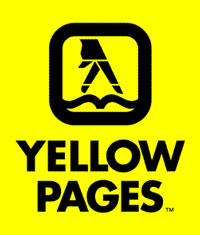 Yellow Pages
Yellow Pages
There are several forms of Yellow Pages that you can use to promote and advertise your business. Aside from the traditional Yellow Pages supplied by phone companies, you can also check out specialized directories targeted to specific markets (e.g. Hispanic Yellow Pages, Blacks, etc.); interactive or consumer search databases; Audiotex or talking yellow pages; Internet directories containing national, local and regional listings; and other services classified as Yellow Pages.
Advantages
- Wide availability, as mostly everyone uses the Yellow Pages
- Non-intrusive
- Action-oriented, as the audience is actually looking for the ads
- Ads are reasonably inexpensive
- Responses are easily tracked and measured
- Frequency
Disadvantages
- Pages can look cluttered, and your ad can easily get lost in the clutter
- Your ad is placed together with all your competitors
- Limited creativity in the ads, given the need to follow a pre-determined format
- Ads slow to reflect market changes
 Radio
Radio
Advantages
- Radio is a universal medium enjoyed by people at one time or another during the day, at home, at work, and even in the car.
- The vast array of radio program formats offers to efficiently target your advertising dollars to narrowly defined segments of consumers most likely to respond to your offer.
- Gives your business personality through the creation of campaigns using sounds and voices
- Free creative help is often available
- Rates can generally be negotiated
- During the past ten years, radio rates have seen less inflation than those for other media
Disadvantages
- Because radio listeners are spread over many stations, you may have to advertise simultaneously on several stations to reach your target audience
- Listeners cannot go back to your ads to go over important points
- Ads are an interruption in the entertainment. Because of this, a radio ad may require multiple exposure to break through the listener's "tune-out" factor and ensure message retention
- Radio is a background medium. Most listeners are doing something else while listening, which means that your ad has to work hard to get their attention
 Television
Television
Advantages
- Television permits you to reach large numbers of people on a national or regional level in a short period of time
- Independent stations and cable offer new opportunities to pinpoint local audiences
- Television being an image-building and visual medium, it offers the ability to convey your message with sight, sound and motion
Disadvantages
- Message is temporary, and may require multiple exposure for the ad to rise above the clutter
- Ads on network affiliates are concentrated in local news broadcasts and station breaks
- Preferred ad times are often sold out far in advance
- Limited length of exposure, as most ads are only thirty seconds long or less, which limits the amount of information you can communicate
- Relatively expensive in terms of creative, production and airtime costs.
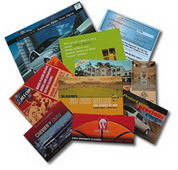 Direct Mail
Direct Mail
Direct mail, often called direct marketing or direct response marketing, is a marketing technique in which the seller sends marketing messages directly to the buyer. Direct mail include catalogs or other product literature with ordering opportunities; sales letters; and sales letters with brochures.
Advantages
- Your advertising message is targeted to those most likely to buy your product or service.
- Marketing message can be personalized, thus helping increase positive response.
- Your message can be as long as is necessary to fully tell your story.
- Effectiveness of response to the campaign can be easily measured.
- You have total control over the presentation of your advertising message.
- Your ad campaign is hidden from your competitors until it's too late for them to react
- Active involvement - the act of opening the mail and reading it -- can be elicited from the target market.
Disadvantages
- Some people do not like receiving offers in their mail, and throw them immediately without even opening the mail.
- Resources need to be allocated in the maintenance of lists, as the success of this kind of promotional campaign depends on the quality of your mailing list.
- Long lead times are required for creative printing and mailing
- Producing direct mail materials entail the expense of using various professionals - copywriter, artists, photographers, printers, etc.
- Can be expensive, depending on your target market, quality of your list and size of the campaign.
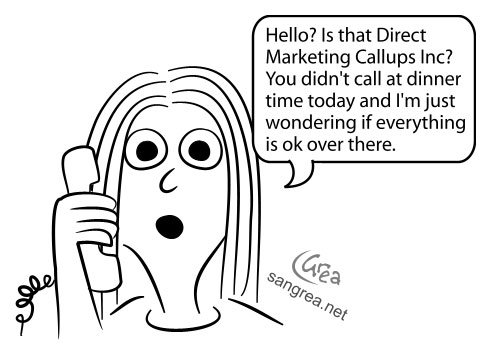 Telemarketing
Telemarketing
Telephone sales, or telemarketing, is an effective system for introducing a company to a prospect and setting up appointments.
Advantages
- Provides a venue where you can easily interact with the prospect, answering any questions or concerns they may have about your product or service.
- It's easy to prospect and find the right person to talk to.
- It's cost-effective compared to direct sales.
- Results are highly measurable.
- You can get a lot of information across if your script is properly structured.
- If outsourcing, set-up cost is minimal
- Increased efficiency since you can reach many more prospects by phone than you can with in-person sales calls.
- Great tool to improve relationship and maintain contact with existing customers, as well as to introduce new products to them
- Makes it easy to expand sales territory as the phone allows you to call local, national and even global prospects.
Disadvantages
- An increasing number of people have become averse to telemarketing.
- More people are using technology to screen out unwanted callers, particularly telemarketers
- Government is implementing tougher measures to curb unscrupulous telemarketers
- Lots of businesses use telemarketing.
- If hiring an outside firm to do telemarketing, there is lesser control in the process given that the people doing the calls are not your employees
- May need to hire a professional to prepare a well-crafted and effective script
- It can be extremely expensive, particularly if the telemarketing is outsourced to an outside firm
- It is most appropriate for high-ticket retail items or professional services.
Below the line
activities include all other promotional activities except advertising i.e.
Sales promotion
It includes activities like
- price reduction,
- giving out free gifts with every purchase,
- organising competitions,
- point of sale display,
- demonstrations,
- after-sales service,
- giving out free samples
Sponsorships
It includes sponsoring sports events or cultural shows or fashion shows
Public relations
Organizing press conferences in giving out information about new products or carrying out some social service activity.
Personal selling
where a representative from the company influences the customers to buy the product. It is common for products which are expensive or custom designed. Sales person at a car showroom is a typical example of personal selling.
Place
The fourth P of marketing is Place. If a product is very good, well promoted and the best prices offered still customers would not be able to buy if it is not easily available to them. Thus, distribution is of vital importance.
There a four ways through which a product reaches the customers. These are also known as Channel of distribution.
Channel 1
Direct marketing from producer to consumers
Usually common for industrial products, it has become very popular in the consumer market with the improvement in communication technology. It is usually employed by specialist mail-order manufacturers and factory outlets.
Channel 2
Manufacturer –retailer-consumer
The rise of large supermarkets chain has reduced the importance of the independent wholesaler. These retail chains buy in bulk and thus deal directly with the manufactures and undertake their own wholesale functions. E.g. Carrefour, Wal-Mart and Tesco.
Channel 3
Manufacturer-wholesaler-retailer-consumer
This is the traditional channel in consumer goods market. Small retailers depend on wholesalers for supplies and manufacturers are also keen to avail themselves the services of wholesalers. The wholesaler buys in bulk from the producer and distributes to small retailers in according to their needs.
Channel 4
Manufacturer-Agent-Wholesaler-Retailer-consumer
This channel is common when manufacturers want to sell their products in a foreign market. Because of the unfamiliarity to the foreign market the manufacturer takes the help of an agent who assists in the movement of goods through the network of wholesalers and retailers.
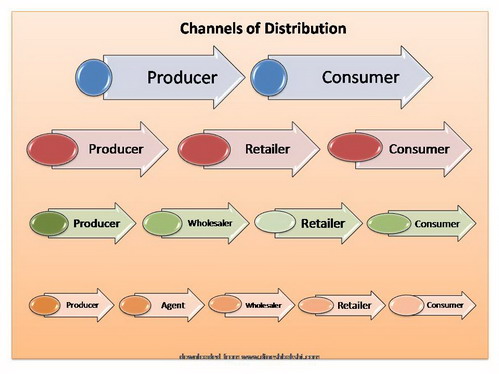
Wholesaler
A person or a firm, who buys in bulk from the manufacture, breaks it into smaller quantities and supplies it to small retailers.
Role of Wholesaler
- Buys in bulk from the producer and breaks into small quantities to retailers.
- Provide storage facilities, thus reducing the need for both manufacturer and retailer to hold such large stocks.
- Wholesalers carry out marketing efforts at their level.
- Provide credit facilities to small retailers.
- Sometimes deliver the goods to the small business outlets.
- Wholesalers usually do some amount of promotion at their level thus helping manufacturers in their marketing efforts.
Selecting the Channel of distribution
Nature of the product: Industrial products are usually sold through a direct channel as compared to consumer products which are distributed through wider distribution channel.
Life of the product: a product with a longer shelf life may use longer channel of distribution whereas products which are perishable are sold directly by the producer. Fruits and bakery products will use a short channel of distribution.
Technicality of the product: Products which need a high level of technical assistance usually are directly sold by the producers. For example, aeroplanes are sold directly by the company without having a network of retailers.
Price of the product: Expensive products are sold through a limited number of outlets to emphasise its exclusiveness and high quality.
Geographical distribution of customers: Products sold to geographically scattered customers use a network of wholesalers and retailers. They might also use Agents if the product is sold in different countries.
Frequency of purchase: Products which are purchased quite often sold through a network of wholesalers and retailers to make it available to everybody. Soaps and shampoos are purchased more often than a diamond ring.
SWOT analysis
SWOT Analysis is a strategic planning method used to evaluate the Strengths, Weaknesses, Opportunities, and Threats involved in a project or in a business venture. It involves specifying the objective of the business venture or project and identifying the internal and external factors that are favorable and unfavorable to achieving that objective.
SWOT stands for Strengths, Weaknesses, Opportunities and Threats.
From an organization point of view SWOT will show the following:
- Strengths: attributes of the organization that are helpful to achieving the objective.
- Weaknesses: attributes of the organization that are harmful to achieving the objective.
- Opportunities: external conditions that are helpful to achieving the objective.
- Threats: external conditions which could do damage to the business's performance.
SWOT analysis is used to find the answers to the following questions.
- How can we Use and Capitalize on each Strength?
- How can we Improve each Weakness?
- How can we Exploit and Benefit from each Opportunity?
- How can we Mitigate each Threat?
Aim
The aim of any SWOT analysis is to identify the key internal and external factors that are important to achieving the objective. These come from within the company's unique value chain. SWOT analysis groups key pieces of information into two main categories:
Internal factors – The strengths and weaknesses internal to the organization. These may include factors such as the 4P's; as well as personnel, finance, manufacturing capabilities, and so on.
External factors – The opportunities and threats presented by the external environment to the organization. The external factors may include macroeconomic matters, technological change, legislation, and socio-cultural changes, as well as changes in the marketplace or competitive position. The results are often presented in the form of a matrix.
Click here for more information





